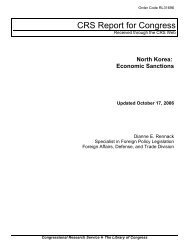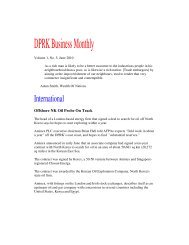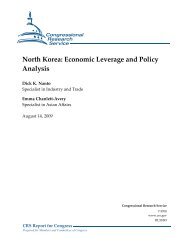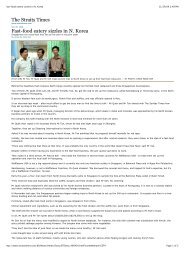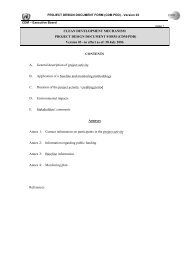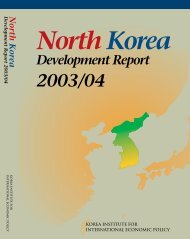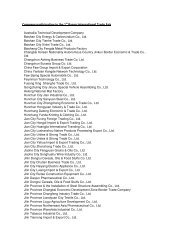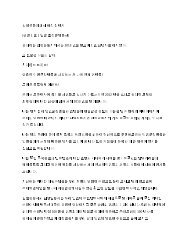North Korean Policy Elites - Defense Technical Information Center
North Korean Policy Elites - Defense Technical Information Center
North Korean Policy Elites - Defense Technical Information Center
You also want an ePaper? Increase the reach of your titles
YUMPU automatically turns print PDFs into web optimized ePapers that Google loves.
odies by organizing meeting agendas, and contained a deciphering office and a chancellery<br />
whose function it was to control all incoming and outgoing secret documents. They were also<br />
responsible for the issuance and safekeeping of party cards, which made them vital to any powerbuilding<br />
venture by the senior leadership. Finally, they kept the records and archives for the<br />
party. There is no doubt that the Soviet authorities responsible for monitoring <strong>Korean</strong><br />
developments would have wanted to use this apparatus to their own ends. The 1949 merger of<br />
the two <strong>Korean</strong> communist parties led to a reorganization of the Central Committee apparatus.<br />
The General Affairs and Secret Departments, which had existed at the central level since 1945,<br />
were now incorporated into the executive staff under Ho Ka-i. 4 Therefore, the information flow<br />
through the party apparatus, both in terms of guidance and control over the system, was run not<br />
out of the General Secretary’s office, but the Executive staff.<br />
This duality of control even extended into the state apparatus, where Kim Il-sung focused<br />
most of his authority. The Cabinet, as the “supreme executive organ,” was the nucleus of the<br />
administrative operations and controls of the state. But, as in all communist systems, it was not<br />
without restraints and controls placed on it by the party. The Political Committee (Politburo) was<br />
the ultimate policy decision-making body. The Cabinet had some authority to participate in the<br />
broad policy objectives of the regime (especially in the area of the economy), but its main<br />
function was to carry out the party’s decisions and supervise the government hierarchy. Kim Ilsung’s<br />
position as prime minister was underwritten by his role as chairman of the KWP. Two of<br />
Kim’s closest associates, Kim Chaek (Deputy Prime Minister and Minister of Industry) and Pak<br />
Ilu (Minister of Internal Affairs) were both members of the party’s Political and Organizational<br />
committees.<br />
The shadow apparatus, populated by the Soviet <strong>Korean</strong>s, had direct contact with the<br />
cabinet. In each ministry, the vice ministers were Soviet <strong>Korean</strong>s. According to one assessment<br />
done by the United States in the early 1950s, the vice ministers’ “authority was considered<br />
greater than that of the minister.” 5 At the central level, this network exerted influence, if not<br />
control, through the Cabinet’s housekeeping organs: the Bureau of General Affairs, Secretariat,<br />
and Bureau of Leaders, apparently a personnel agency for high-level appointments. These organs<br />
in turn had direct lines to the individual ministries via the personnel, general affairs, and<br />
4 In 1945, the General Affairs Department was established. Its director was Pak Chong-ho, a close associate of Kim<br />
Il-sung and a member of his anti-Japanese partisan movement. Pak is the father of Pak Myong-chol, the current<br />
Chairman of the Physical Culture and Sports Guidance Commission.<br />
5 <strong>North</strong> Korea: A Case Study in the Techniques of Takeover (Washington, D.C.: Department of State, 1951). This<br />
report represented the findings of a State Department Research Mission sent to Korea on October 28, 1950, to<br />
conduct a survey of the <strong>North</strong> <strong>Korean</strong> regime as it operated before the outbreak of the <strong>Korean</strong> War. Its findings<br />
were declassified in 1961.<br />
II-4



